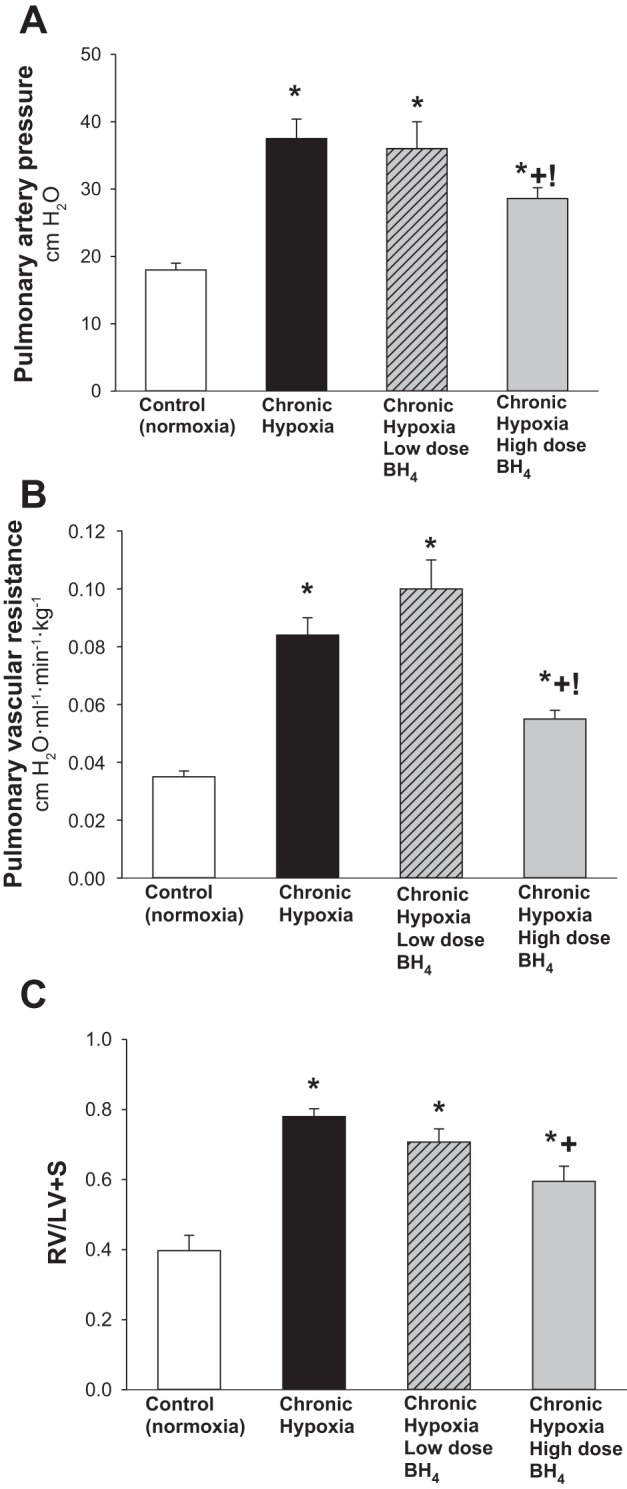Fig. 1.

A: pulmonary artery pressure in control (normoxic) and chronically hypoxic piglets. High-dose (n = 12), but not low-dose (n = 4), treatment with oral BH4 (sapropterin dihydrochloride) reduced pulmonary artery pressure in hypoxic piglets to values less than those in untreated (n = 8) hypoxic piglets. Pulmonary artery pressure was higher in all groups of hypoxic piglets than values in normoxic controls (n = 10). Moreover, pulmonary artery pressure was less in hypoxic piglets treated with the high- vs. low-dose oral BH4. B: pulmonary vascular resistance (PVR) in control (normoxic) and chronically hypoxic piglets. High-dose (n = 12), but not low-dose (n = 4), treatment with oral BH4 reduced PVR in hypoxic piglets to values less than those in untreated (n = 8) hypoxic piglets. PVR was higher in all groups of hypoxic piglets than values in normoxic controls (n = 10). Moreover, PVR was less in hypoxic piglets treated with the high- vs. low-dose oral BH4. C: Fulton index (RV/LV+S) measurements of right ventricular mass in control (normoxic) and chronically hypoxic piglets. All three groups of chronically hypoxic piglets developed increased right heart mass compared with normoxia controls (normoxic controls, n = 10; untreated chronic hypoxia, n = 8; low-dose BH4-treated chronic hypoxia, n = 4; high-dose BH4-treated chronic hypoxia, n = 12). The high-dose, but not the low-dose, oral BH4-treatment reduced right ventricular mass in chronically hypoxic piglets to values below those measured in untreated chronically hypoxic piglets. Values are means ± SE. Different from *control (normoxic), +untreated chronic hypoxic, and !low-dose BH4-treated chronic hypoxic: P < 0.05; ANOVA with post hoc comparison test.
